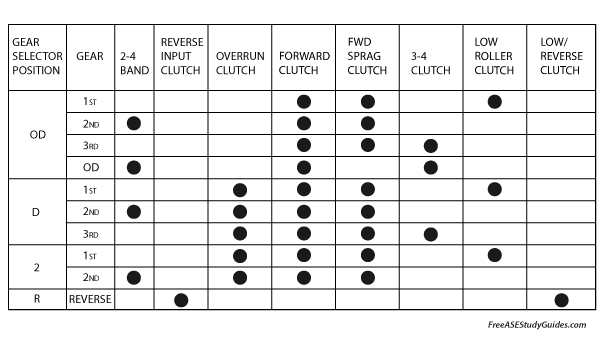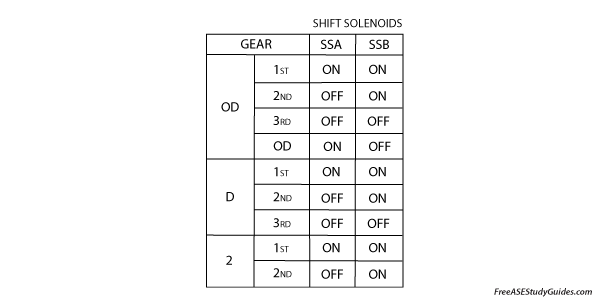ASE A2 Automatic Transmission Practice Test

6. An automatic transmission has no overdrive and slips in second gear. View the chart above to determine which of the following would MOST likely result in this condition?
- A. The forward clutch.
- B. The low roller clutch.
- C. The 2-4 band.
- D. The low reverse clutch.

7. A vehicle is not shifting into first gear and has no overdrive. View the chart above to determine which of the following is correct?
- A. Shift solenoid A is faulty.
- B. Shift solenoid A's circuit is compromised.
- C. Shift solenoid B is faulty.
- D. Both A and B are correct.
8. An automatic transmission with a planetary gearset is being diagnosed for harsh shifting. Which of these could be the cause?
- A. A sticking pressure regulating valve.
- B. A faulty EPC solenoid.
- C. Old contaminated fluid.
- D. All of the above.
9. Transmission fluid is leaking from the dipstick tube. Technician A says this could be caused by overfilling the transmission. Technician B says this leak could be caused by aerated and foamy fluid. Who is correct?
- A. Technician A
- B. Technician B
- C. Both A and B
- D. Neither A or B
10. Technician A says petroleum-based ATF is dyed red and turns dark brown when overheated. Technician B says a slipping band or clutch can cause burnt, dark-colored transmission fluid. Who is correct?
- A. Technician A
- B. Technician B
- C. Both A and B
- D. Neither A or B